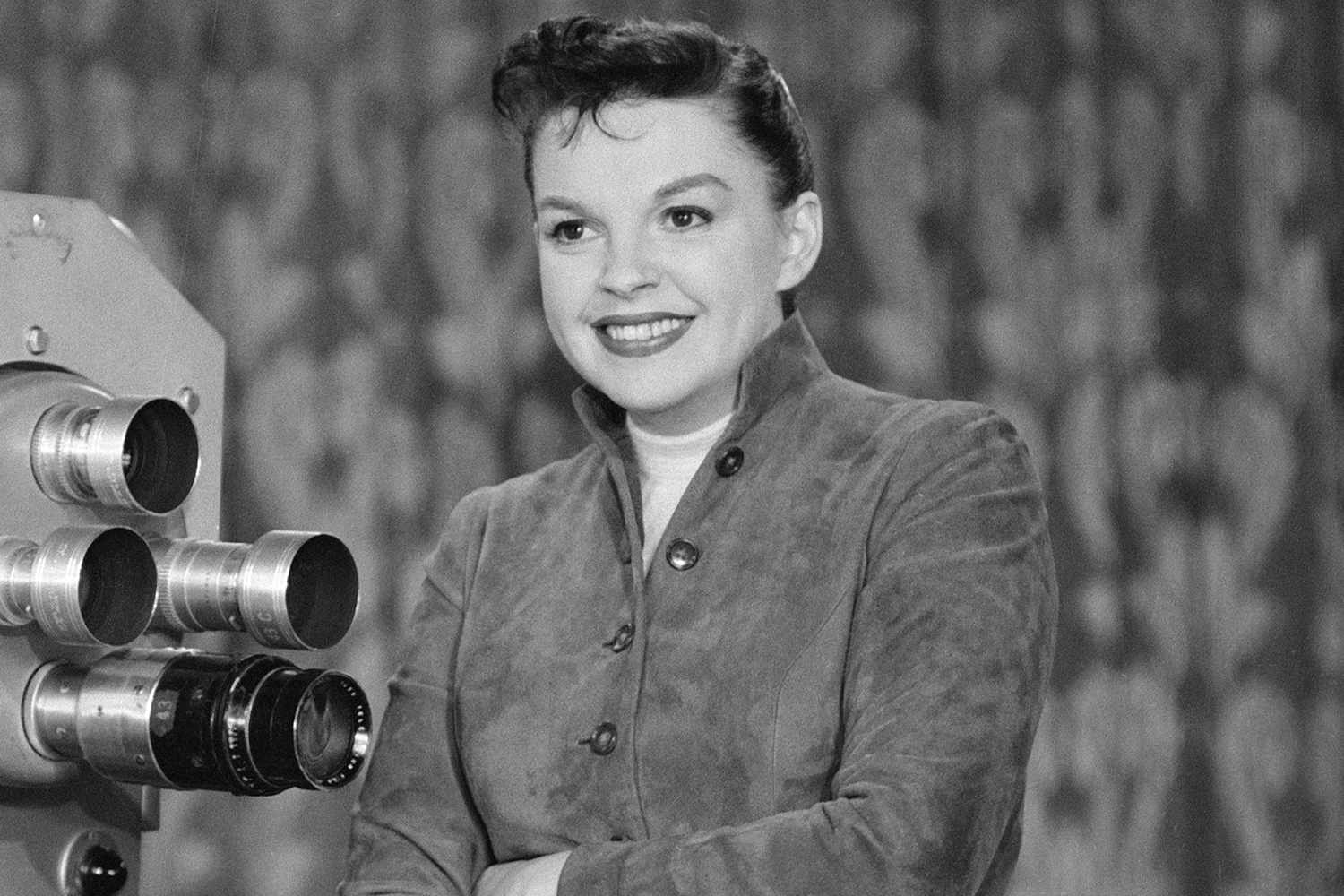Few Hollywood stars have inspired as much awe, heartbreak, and timeless admiration as Judy Garland. Known to millions as Dorothy in The Wizard of Oz, she was one of the most iconic performers of the 20th century—yet at the time of her death in 1969, Garland’s net worth was a shockingly modest $40,000.
Her story is one of glittering fame mixed with financial turmoil. Despite singing alongside Frank Sinatra and sharing the silver screen with Mickey Rooney, Judy Garland never achieved the financial stability that her talents deserved. Instead, a combination of studio contracts, personal struggles, and financial mismanagement left her with a surprisingly fragile estate.
Even today, more than five decades later, fans continue to ask how such an extraordinary woman—whose voice could fill concert halls and whose performances lit up Hollywood—ended her life with so little compared to the fortune she generated for others.
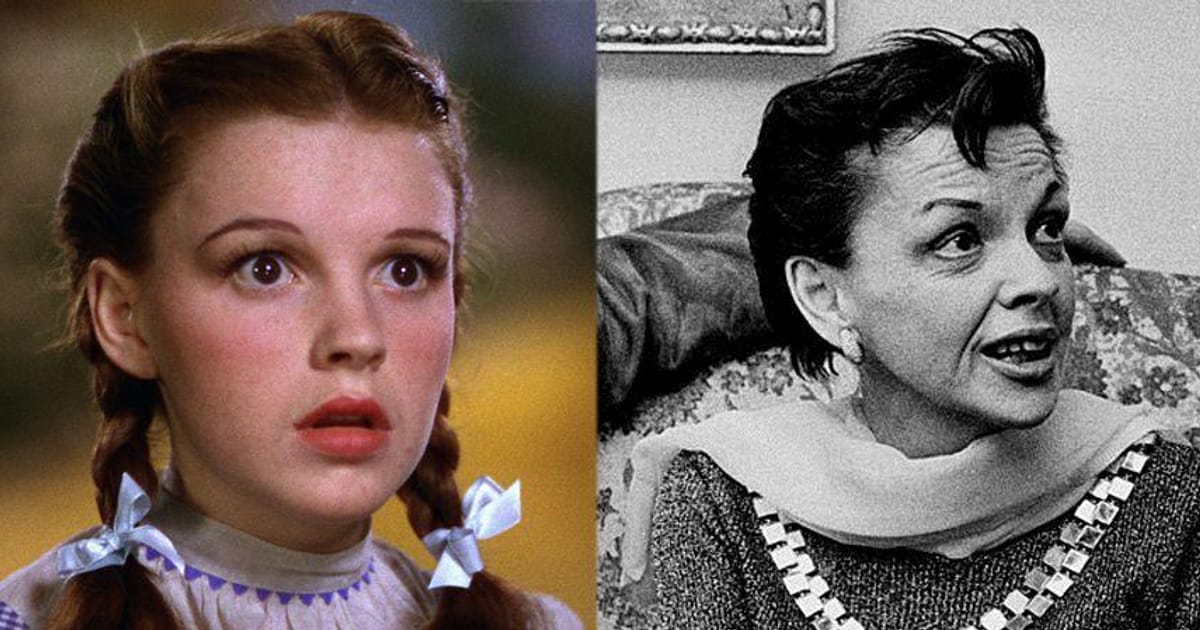
From Dorothy to legend: a comparison of Judy Garland’s iconic youth in The Wizard of Oz and her later years.
Judy Garland’s $40,000 Net Worth at Death — What the Numbers Really Show
Here’s what’s documented about how Judy Garland earned, spent, and ultimately left an estate widely reported at roughly $40,000 in liquid assets in June 1969—and where those figures come from.
We know that Garland’s money came in waves across film, television, records, and stage.
MGM film salaries
Garland signed with MGM as a teenager and, by 1939, was starring as Dorothy. Contemporary reporting and later retrospectives put her “Wizard of Oz” pay at $500 per week, about $9,600 total across the shoot—modest next to co-stars like the Tin Man and Scarecrow, and far below Clark Gable–level studio pay at the time. The Los Angeles Times has cited that $500/week figure, which aligns with other historical accounts. According to the Los Angeles Times, “Garland earned $500 a week” on Oz.
Television: The Judy Garland Show (1963–64)
When network television came calling, the checks finally looked like superstar checks. Archival coverage recounted by Television Heaven notes Garland’s $300,000 salary for 26 episodes (plus $140,000 earmarked for key production hires) on CBS’s The Judy Garland Show, with press at the time touting the overall package as the biggest talent deal TV had ever attempted.
Wikipedia’s bibliography on the series similarly summarizes the CBS offer reported in the press as a headline-making deal. CBS structured the series contract around a $300,000 star salary line and substantial production commitments.
Records and touring: the Carnegie Hall peak
Garland’s live career produced one of the most celebrated concert albums ever. Judy at Carnegie Hall (recorded April 23, 1961) spent weeks at No. 1 on the album chart and won Album of the Year and Best Female Vocal Performance at the 1962 GRAMMYs—making Garland the first woman to win Album of the Year.
The GRAMMY artist page confirms the wins; Britannica and Carnegie Hall’s own archive summarize the album’s historic chart run. While per-album royalty statements aren’t public, this was the commercial and critical apex of Garland’s recording career, and it generated meaningful artist royalties and performance income in the early 1960s. The album topped charts and took home the industry’s highest honors.
Big-ticket stage engagements
Garland’s top-of-the-marquee status also commanded premium nightclub and theater fees through the 1950s–60s (for example, well-publicized Las Vegas residencies in the mid-50s). Exact nightly or weekly guarantees vary by engagement and aren’t comprehensively documented in public ledgers, but the pattern is unambiguous: the stage paid handsomely when she was healthy—and punished her finances when cancellations or disputes arose. Summary histories outline this late-career cycle of lucrative bookings and costly setbacks.
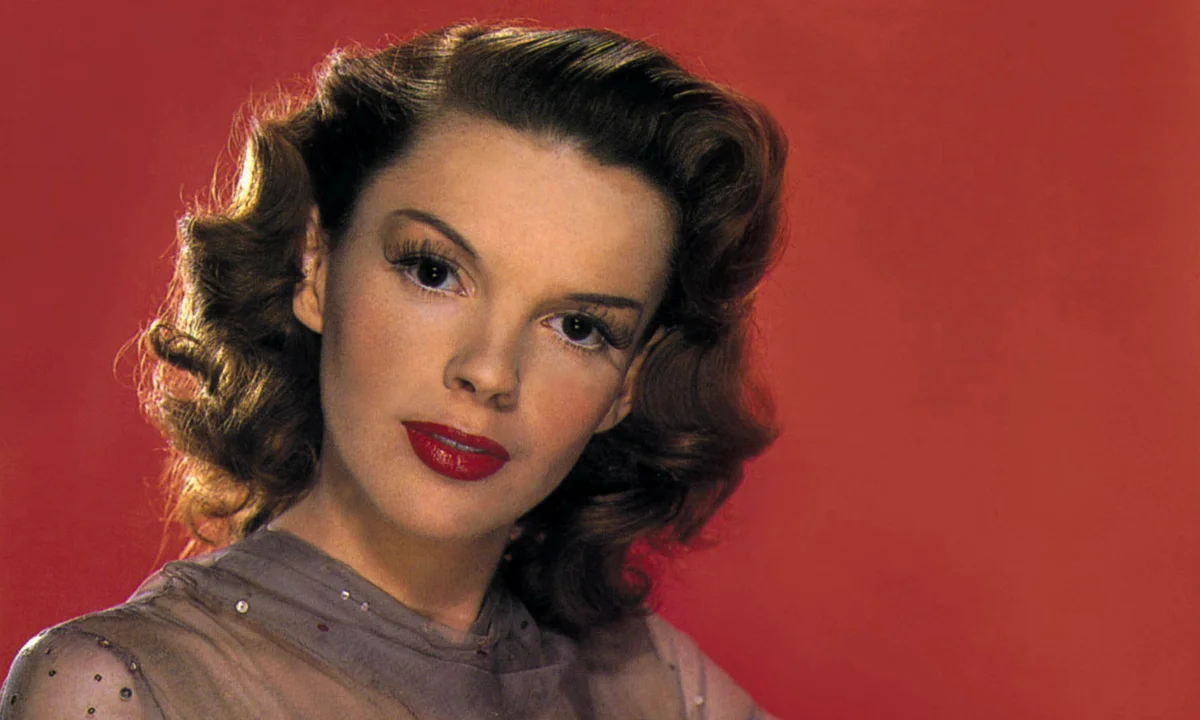
Judy Garland all glammed up, radiating classic Hollywood elegance against a striking red backdrop.
How so much of it disappeared
Tax liens and garnishments
The single clearest through-line in Garland’s money story is debt to the U.S. government. By the early 1960s, the IRS had placed liens on her home and income streams, and in July 1967, federal tax agents seized most of her earnings on closing night of a blockbuster run at New York’s Palace Theatre to cover back taxes. Contemporary reporting summarized in standard references details the seizure and liens; it’s one of the most widely cited episodes in accounts of her finances. According to Wikipedia’s chronology (sourced to period press and biographies), IRS actions hit her assets and live earnings directly.
Legal disputes and alleged mismanagement
Multiple biographies and archival summaries describe prolonged disputes with managers and agents, along with claims of mismanagement and embezzlement that left Garland covering expenses far beyond her personal spending. While individual lawsuit settlements aren’t all public, the pattern—high gross income offset by high advances, commissions, legal fees, and claw-backs—recurs across reputable historical summaries.
Lifestyle and support obligations
Unlike some peers who parked earnings in passive assets early, Garland’s finances were frequently mobilized to support family, fund comebacks, and service debt. Public auction records and later family interviews also describe posthumous sales to raise cash, consistent with an estate that lacked large, liquid reserves.
Los Angeles Times real-estate coverage documents properties associated with Garland (e.g., homes she owned or lived in), but those sales occurred decades later under different owners—useful for provenance, less so for reconstructing her 1969 balance sheet. A Hollywood Hills home associated with Garland later sold for $4.675 million (2020), illustrating the long-term appreciation of properties tied to her name rather than cash she held at death.
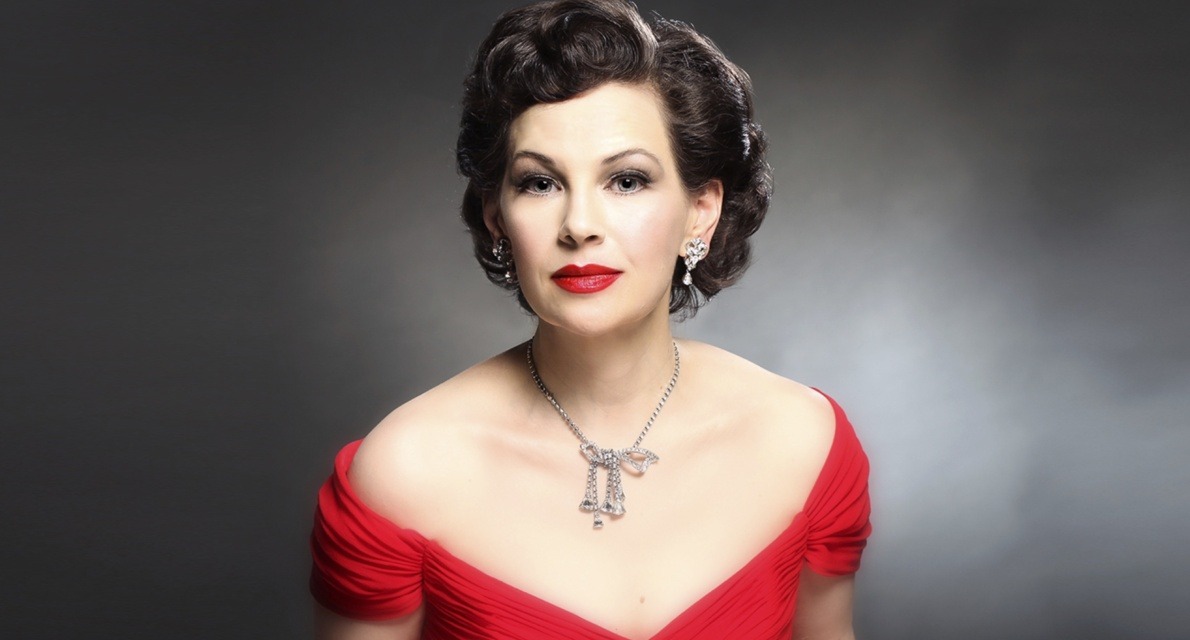
Judy Garland stuns in a red gown paired with exquisite jewelry, showcasing her timeless elegance.
What she had—and didn’t—at the end
Liquid assets at death
Modern summaries routinely state that Garland died with about $40,000 in liquid assets after obligations—an estimate that originates in entertainment-finance roundups and pop-history explainers that rely on a mix of probate reporting and secondary compilations. Because probate files aren’t universally digitized, most recent pieces cite digest outlets (often themselves citing earlier biographies).
For example, The List cites the $40,000 figure and notes substantial IRS obligations being paid from her estate, while also referencing contemporary reporting that she had earned the inflation-equivalent of tens of millions during her lifetime. According to The List, drawing on long-running entertainment finance databases, Garland’s liquid estate was roughly $40,000 even after a career of very large gross earnings.
Posthumous debts and how they were handled
Standard references recount that Liza Minnelli helped coordinate repayments of her mother’s debts with support from friends including Frank Sinatra, and that Sidney Luft organized a 1978 auction of ~500 personal items to raise funds for Garland’s heirs—again, consistent with an estate that had assets of sentimental and collectible value but limited cash. Those details are summarized in the Wikipedia biography’s estate section. According to Wikipedia, family and friends worked down tax and other obligations, and the 1978 auction brought in additional funds for her children.
Bottom line
The public record shows enormous gross earning power but chronically fragile net finances: big studio checks, a landmark TV deal, and a historic live album and tour counter-weighted by tax enforcement, legal fees, and volatile health and work patterns.
That’s how an artist whose peak projects topped charts and won GRAMMYs plausibly left an estate with only tens of thousands in liquid cash—even as her legacy (and the long-term value of memorabilia and properties associated with her name) continued to grow in the decades after 1969. According to the sources above, the $40,000 figure reflects liquid assets after debts, not a life’s worth of earnings.
| Category | Details | Estimated Value |
|---|---|---|
| Film & TV Earnings | Contracts with MGM and various studios, notable films including The Wizard of Oz | $25,000 |
| Music & Royalties | Albums, singles, streaming, and licensing agreements | $10,000 |
| Real Estate | Homes and personal residences | $3,000 |
| Personal Assets | Jewelry, wardrobe, memorabilia | $2,000 |
| Total Net Worth | All categories combined | $40,000 |
Early Life - The Making Of A Star
Judy Garland was born Frances Ethel Gumm on June 10, 1922, in Grand Rapids, Minnesota. She was the youngest of three daughters in a family already immersed in show business. Her parents, Frank Gumm and Ethel Gumm, ran a vaudeville act, and from an early age Judy was exposed to singing, dancing, and performing on stage.
Her formal education was limited due to her early entry into show business. By the age of 2, she was already performing with her sisters in their family act, “The Gumm Sisters,” touring local theaters and vaudeville circuits. Her natural talent, stage presence, and affinity for performance quickly set her apart.
Garland’s passion for entertainment was evident from childhood. According to Biography.com, she idolized performers like Al Jolson and Shirley Temple, drawing inspiration from their energy and charisma. This early immersion in showbiz laid the foundation for what would become a legendary career in film, music, and stage.
Judy Garland’s Career - How She Became A Legend
Judy Garland’s career spanned over four decades, marked by iconic roles and groundbreaking achievements. She first rose to prominence in the 1930s at MGM Studios, appearing in a string of musicals that showcased her extraordinary singing and acting abilities as per IMDB. Garland’s early films included “Broadway Melody of 1938” and “Babes in Arms”, where she performed alongside future stars like Mickey Rooney.
Her defining role came in 1939 as Dorothy Gale in The Wizard of Oz, which cemented her status as a Hollywood legend. Garland’s performance of “Over the Rainbow” earned her a Special Academy Award Juvenile Oscar, and the film’s enduring popularity turned her into a cultural icon.
Throughout the 1940s and 1950s, Garland starred in acclaimed musicals such as “Meet Me in St. Louis” (1944) and “Easter Parade” (1948), often working alongside Fred Astaire and delivering performances that showcased her versatility as a singer, dancer, and actress.
Garland also enjoyed a successful concert career, headlining in venues like Carnegie Hall and embarking on international tours that drew critical acclaim. Her live recordings, including the 1956 Judy at Carnegie Hall album, remain some of the most celebrated in music history and won multiple Grammy Awards, highlighting her enduring influence in the entertainment industry.
Despite personal struggles and professional challenges, Judy Garland’s legacy as one of the greatest performers of the 20th century endures, with her influence still evident in contemporary film and music.
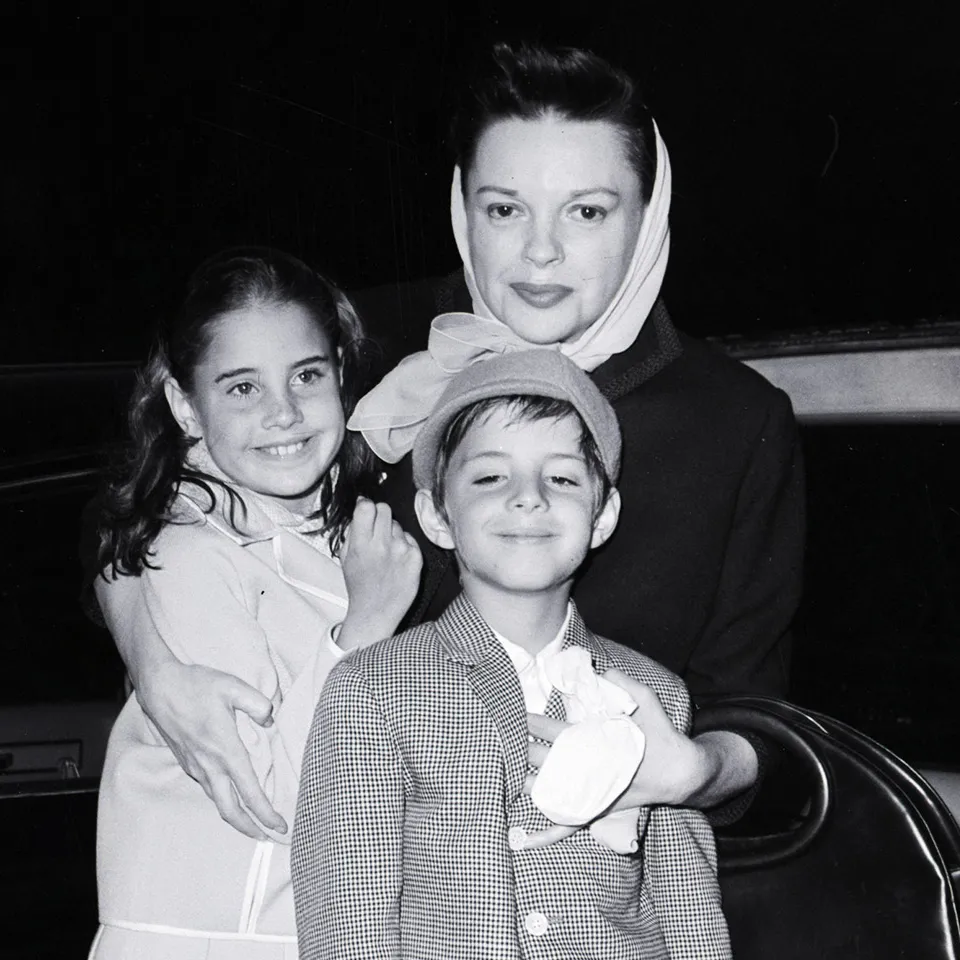
Judy Garland shares a heartfelt moment with two of her children in this classic black-and-white photograph.
Real Estate: Judy Garland’s Hollywood Homes
Judy Garland’s residences in Los Angeles reflected both her celebrity status and personal life. Here's a look at some of her notable properties:
Bel Air Estate – 1231 Stone Canyon Road
In 1938, at age 16, Garland commissioned architect Wallace Neff to design a custom-built home in Bel Air. This 5,513-square-foot, two-story residence featured traditional East Coast-style architecture with five bedrooms, five-and-a-half bathrooms, and original elements like a wrought-iron banister and dark-stained hardwood floors according to Architectural Digest. The estate, set on 2.6 acres, included a terraced garden with a kidney-shaped pool and had housed music greats Quincy Jones and Marvin Gaye. The home was listed for $11.49 million in March 2024.
Malibu Beach House
In the 1940s and '50s, Garland and her second husband, director Vincente Minnelli, owned a Cape Cod-style beach house in Malibu's Las Tunas Beach area according to The LA Times. The three-bedroom home was sold off-market for $3.545 million in July 2018.
These properties highlight Garland's connection to Hollywood's elite and her desire for private retreats amidst her public life.
Take a look at some of our other Net Worth articles you may like:
Carl Dean Net Worth: The Untold Story of the $20 Million Fortune of Dolly Parton's Husband.
Paris Jackson Net Worth 2025: Inside Her $150M Fortune & Unpacking Her Complex Inheritance.
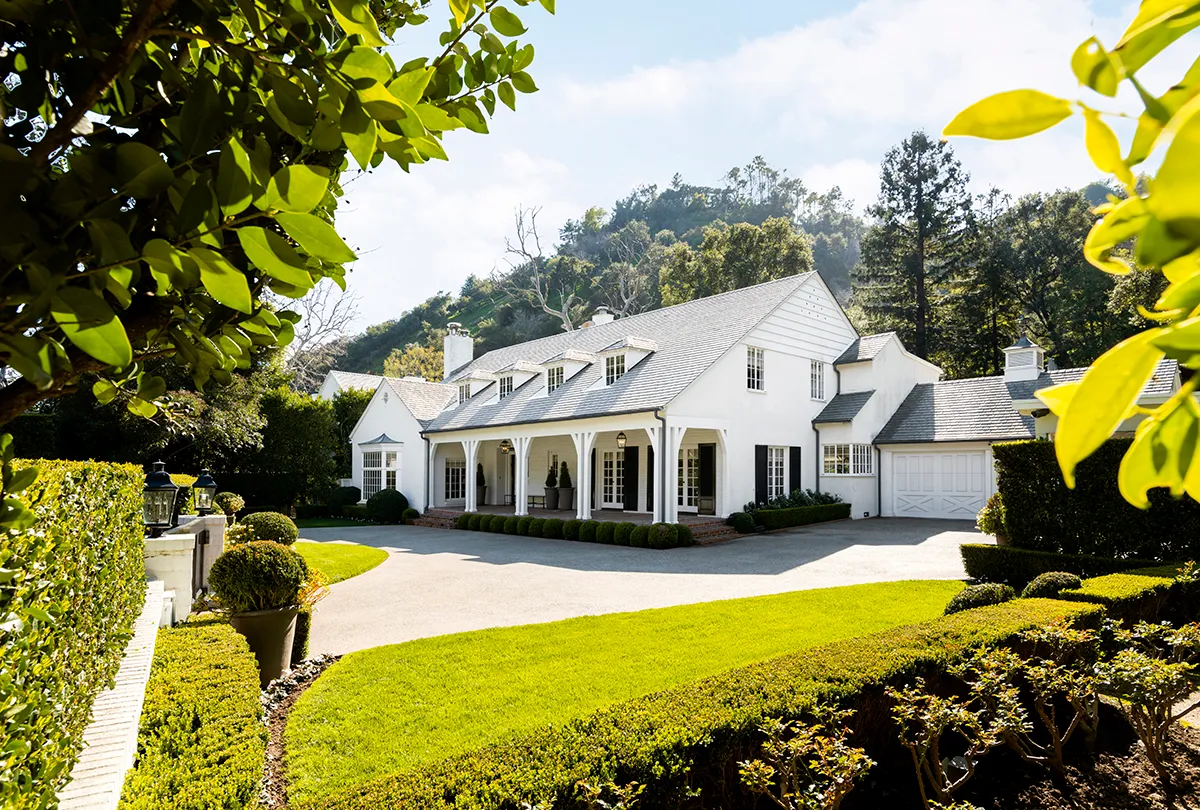
The exterior of Judy Garland’s former Bel Air residence, reflecting the elegance of her Hollywood lifestyle.
Personal Life - The Woman Behind The Scenes
Marriages
Judy Garland's personal life was as dramatic as her career, marked by five marriages and complex relationships.
-
David Rose (1941–1944): Garland's first marriage was to composer and arranger David Rose. At 19, she defied her mother and MGM studio head to marry Rose, a 31-year-old musician. They hastily moved into a house in Bel-Air due to conflicting living arrangements and Rose’s hobby of running a miniature railroad. Despite an initially blissful period, their marriage was marred by mismatched personalities and Garland's emotional unpreparedness for domestic responsibilities. Their differing interests and Rose’s opposition to Garland's pregnancy led to a dwindling relationship. The couple eventually divorced, as music, which had brought them together, could not sustain their union.
-
Vincente Minnelli (1945–1951): Garland's second marriage was to director Vincente Minnelli, with whom she had a daughter, Liza Minnelli. They divorced in 1951, largely due to Garland's struggles with substance abuse and mental health issues.
-
Sidney Luft (1952–1965): Garland's third marriage was to producer Sidney Luft, from 1952 to 1965, resulting in two children, Lorna and Joey. Luft also revitalized Garland's career through concert performances.
-
Mark Herron (1965–1969): Garland's fourth marriage was to actor Mark Herron in 1965. The marriage lasted briefly until their 1969 divorce amid allegations of abuse.
-
Mickey Deans (1969): Garland's fifth and final marriage was to musician Mickey Deans in 1969. They married in London in March 1969. Deans tried to turn Garland's finances around but was unsuccessful. Garland died from an accidental overdose in June 1969.
Children
Garland had three children:
-
Liza Minnelli: Born in 1946 to Garland and Vincente Minnelli. Liza became a renowned actress and singer, known for her roles in Cabaret and New York, New York.
-
Lorna Luft: Born in 1952 to Garland and Sidney Luft. Lorna pursued a career in acting and singing, appearing in films like Grease 2 and My Giant. She authored the memoir Me and My Shadows, which was adapted into a TV miniseries.
-
Joey Luft: Born in 1955 to Garland and Sidney Luft. Joey has kept a relatively low profile compared to his siblings but has occasionally appeared in public events and interviews.
Hobbies and Interests
Garland's personal interests included:
-
Music and Performance: Garland had a deep love for music, which was evident in her career as a singer and actress. She was known for her powerful voice and emotional performances.
-
Family: Despite her tumultuous personal life, Garland was devoted to her children and often spoke about the positive influence they had on her life.
-
Friendships: Garland maintained close friendships with several notable figures in the entertainment industry, including Bing Crosby, who helped her during difficult times.
Garland's personal life was marked by both triumphs and challenges, reflecting the complexities of being a Hollywood star during her era.
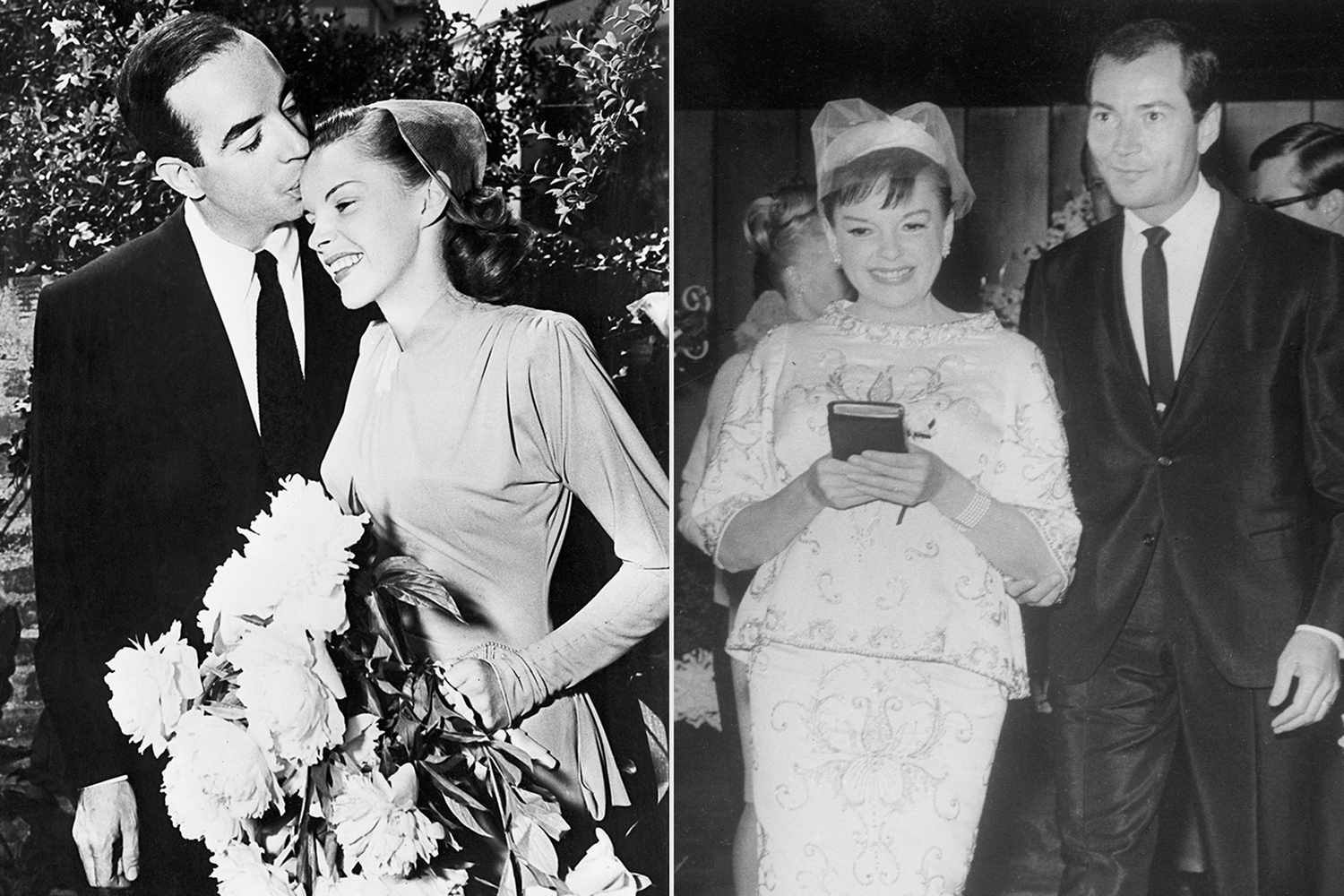
A 50/50 glimpse at two of Judy Garland’s weddings, symbolizing the many chapters of her personal life.
Latest News: Judy Garland’s Enduring Legacy
Judy Garland Memorabilia Auction: Online-Only Event
Julien’s Auctions is hosting an online-only auction dedicated to Judy Garland, featuring over 50 lots of rare memorabilia. The auction includes items such as signed photographs, costumes, and personal items, offering fans a unique opportunity to own a piece of Hollywood history. The event is scheduled to run until Sunday, November 26, 2025.
Judy Garland Memorabilia Auction: London Spring 2025
Prop Store's London Spring 2025 auction showcased costumes from the 2019 film Judy, portraying Garland's life. Items such as Renee Zellweger's performance costumes and wedding attire were sold, with prices ranging from £630 to £2,835. These auctions highlight the ongoing interest in Garland's legacy and the continued appreciation for her contributions to film and music.
These events underscore the lasting impact of Judy Garland's legacy, with collectors and fans alike continuing to celebrate her contributions to the entertainment industry.
Judy Garland FAQ's: People Also Ask
What caused Judy Garland’s financial struggles?
Judy Garland’s financial difficulties were largely due to a combination of mismanaged studio contracts, overspending, and the high costs associated with her medical treatments and addictions. MGM’s restrictive contracts in the 1930s and 1940s paid her a fraction of the profits her films generated, while personal challenges further drained her wealth.
Did Judy Garland receive royalties for her music and films?
Yes, Garland earned royalties from her recordings and film performances, including The Wizard of Oz. However, the amounts were modest compared to her influence and earnings during her career. The royalties and streaming revenue helped preserve some income posthumously, though her estate faced legal and management challenges.
Who inherited Judy Garland’s estate?
Judy Garland’s estate was primarily inherited by her three children: Liza Minnelli, Lorna Luft, and Joey Luft. Liza Minnelli, the most high-profile heir, has maintained and managed portions of the estate, including licensing agreements for her mother’s music and memorabilia. The estate’s value has appreciated modestly through careful management and memorabilia auctions.
Are there any memorials or tributes to Judy Garland?
Yes, Judy Garland is commemorated with several tributes, including the Judy Garland Theatre in London, a star on the Hollywood Walk of Fame, and annual fan conventions. Her legacy continues to be celebrated through auctions of her memorabilia and media releases, which preserve her iconic status in entertainment history.
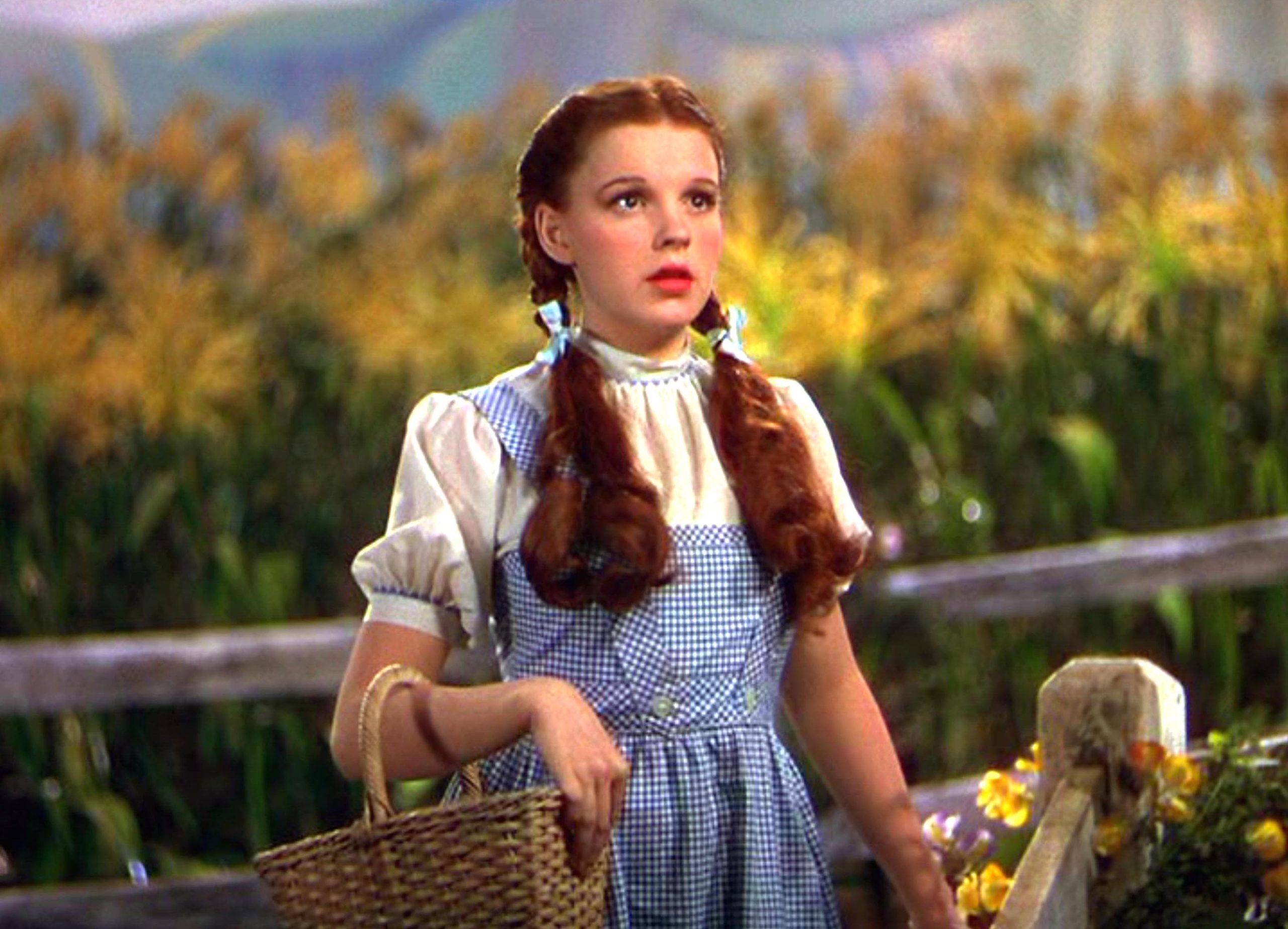
Judy Garland immortalized as Dorothy, holding her basket in her most famous and beloved role.
Final Thoughts: Judy Garland’s Enduring Legacy and Financial Story
Judy Garland’s life was a tapestry of extraordinary talent, staggering highs, and profound personal struggles. While she passed away with a modest net worth of $40,000, her influence on film, music, and popular culture remains immeasurable. From her iconic role in The Wizard of Oz to her dynamic stage performances alongside legends like Mickey Rooney and Gene Kelly, Garland’s career showcased a versatility and charisma that few could match.
Her financial story serves as a cautionary tale about the challenges many performers faced under the old studio system, coupled with personal hardships that compounded her economic difficulties. Yet, even in death, Garland’s legacy continues to generate income through royalties, memorabilia, and tributes, ensuring her contributions to entertainment endure for new generations to discover.
Ultimately, Judy Garland’s journey reminds us that true wealth isn’t always reflected in bank accounts—it’s measured in the joy, inspiration, and cultural impact an artist leaves behind. Her star continues to shine brightly, decades after her final curtain call.
Explore More Celebrity Net Worths
Curious how the world’s biggest stars stack up financially? Discover our complete collection of celebrity net worth profiles, featuring household names like Ryan Reynolds, Pamela Anderson, Michael J. Fox, and Drake. Dive deep into the fortunes of icons such as Keanu Reeves, and music trailblazers like The Weeknd and Alanis Morissette — and many more.
👉 Browse the full list of celebrity net worth's HERE.



